Higher Psychology - sleep and dreams
1/19
There's no tags or description
Looks like no tags are added yet.
Name | Mastery | Learn | Test | Matching | Spaced |
|---|
No study sessions yet.
20 Terms

biological approach relating to sleep and dreams
The biological approach says that sleep and dreams happen because of how the brain controls the body.
Sleep is controlled by the brain, like how it clears adenosine (a chemical that makes you feel tired) and manages body rhythms (like when you feel sleepy or awake).
Dreams happen because of random brain activity during sleep, and this approach says they don’t have any real meaning.
studies
The biological approach explains dreams using the Activation-Synthesis Theory (Hobson & McCarley, 1977).
They believed dreams happen because of random brain activity during sleep. The brain sends random signals (neurons firing), and the mind tries to make sense of them, even though they have no real meaning.
evaluation
the biological approach is limited because it ignores how thinking and information processing affect sleep (1).
It is too simple to say that only biology controls sleep and dreams (1).
The explanation of dreaming is especially weak (1) because it cannot explain why some dreams make sense or why we often dream about things from the previous day (1).
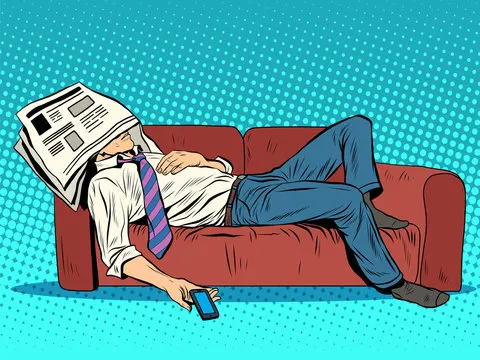
Define sleep
Firth (2015): Sleep can be defined as a state of reduced conscious awareness during which the body is less active and less responsive to the outside world.
Cambridge English Dictionary: The resting state in which the body isn't active and the mind is unconscious.

Define dreams
A sequence of images, ideas, emotions, and sensations that usually occur without choice in the mind during certain stages of sleep.
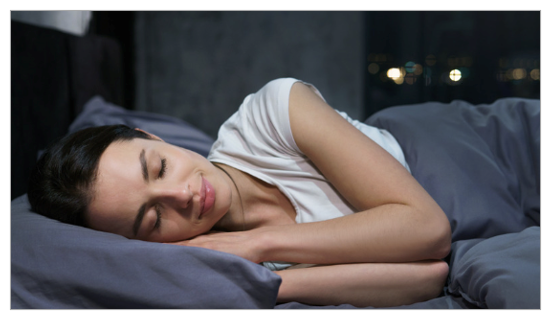
Describe and explain the role of the brain in sleep
, the brain has to control various endogenous sleep-regulating substances in order to sleep
Endogenous Sleep-Regulating Substances
Melatonin (Sleep Hormone)
Released by the pineal gland to make us sleepy.
Triggered by darkness → Sunlight decreases → Optic nerve → SCN → Pineal gland produces melatonin.
Highest at midnight, reduces in the morning when sunlight appears.
Adenosine (Sleep Pressure)
Builds up in the brain during waking hours → More adenosine = More sleep pressure.
Highest at the end of the day → Makes us feel tired.
Reduced during sleep → Replaced with glycogen (energy for the next day).
Cortisol (Stress & Wakefulness)
Known as the stress hormone → Helps with fight-or-flight response.
Regulates sleep-wake cycle → Rises and falls over 24 hours.
High in the morning → Boosts energy for 30-45 minutes after waking up.
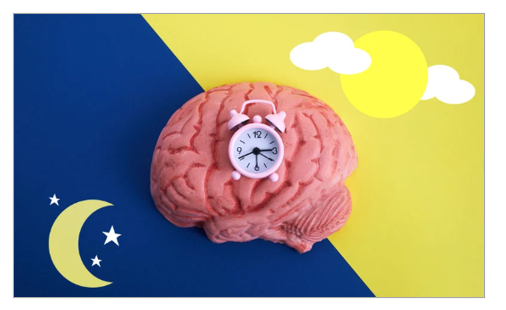
circadian rythyms
Built-in body clock → Controls sleep-wake cycle (24-hour rhythm).
Regulated by the hypothalamus → Keeps body in balance (homeostasis).
SCN (Suprachiasmatic Nucleus) inside the hypothalamus controls melatonin release from the pineal gland → Makes us sleepy.
Light & external factors (e.g., caffeine) can affect the cycle.
Internal clocks = Endogenous pacemakers, but they can be influenced by exogenous pacemakers (e.g., sunlight).
Evidence for the Body ClockMichel Siffre’s Cave Experiment (1962)
Lived in total darkness (no clocks/sunlight) for 2 months.
Lost track of time but still followed a 24.5-hour sleep-wake cycle.
Proves the body clock is natural and works without daylight.
Morgan’s Hamster Experiment (1955)
Some hamsters had an unnatural 20-hour body clock.
SCN from these hamsters was transplanted into normal hamsters.
Normal hamsters adopted a 20-hour cycle.
Proves SCN controls the sleep-wake cycle.

describe the benefits to each stage of sleep non rem and rem
Stage 1 - Light Sleep (Transition to Sleep)
Physical Benefits:
Muscles relax.
Heart rate and breathing slow down.
Mental Benefits:
Moving from being awake to asleep.
Calming of the mind.
Stage 2 - Light Sleep (Sleep Spindles)
Physical Benefits:
Body temperature drops.
Heart rate and blood pressure decrease.
Energy is conserved.
Mental Benefits:
Helps with memory and storing information.
Brain activity slows and cognitive function improves.
Stage 3 - Deep Sleep (Slow-Wave Sleep)
Physical Benefits:
Tissue repair.
Growth and immune system strengthening.
Energy replenishment.
Mental Benefits:
Long-term memory storage.
showing delta waves (very slow, high-amplitude waves).
Helps with learning and cognitive function.
Stage 4 - Deep Sleep (Very Restorative Sleep)
Physical Benefits:
Deep tissue repair.
Growth hormone release and muscle recovery.
Energy restoration.
Mental Benefits:
Provides mental clarity and cognitive functioning.
Helps with emotional stability and psychological recovery.
Stage 5 - REM Sleep (Rapid Eye Movement, Dreaming)
Physical Benefits:
Muscle paralysis (you don't act out dreams).
Heart rate and blood pressure rise.
Breathing rate increases.
Mental Benefits:
Dreaming happens here.
Helps with emotional regulation and problem-solving.
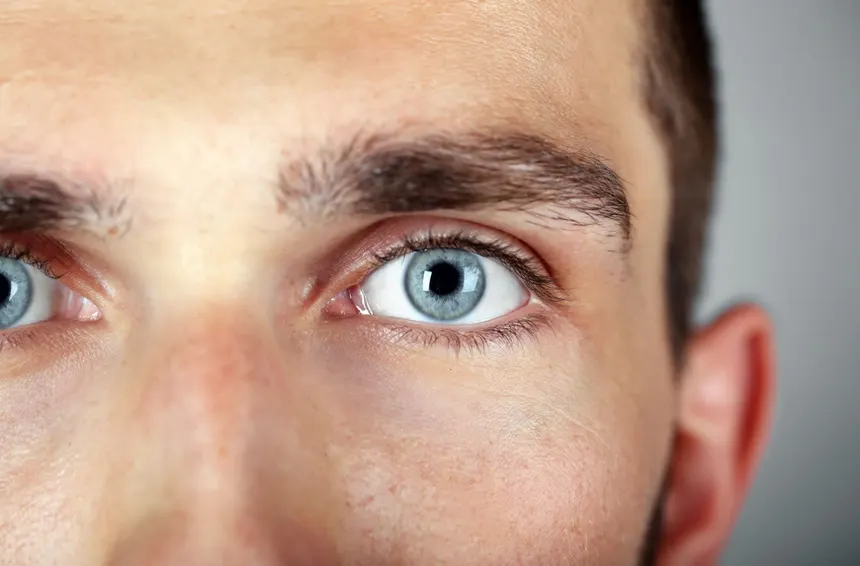
Describe and explain Non-REM and rapid eye movement (REM) sleep
Stage 1 - Non-REM (Light Sleep)
non-REM sleep is the initial phase of sleep, each stage of non-REM sleep has its own characteristics
Description: This is the stage between being awake and being asleep.
You can still hear sounds like music or people talking.
Your eyes are closed but may flicker open.
You are drifting off into sleep.
Key Fact: You’re easily awoken during this stage.
Stage 2 - Non-REM (Light Sleep)
Description: After about 10 minutes, you start to get less responsive to the environment.
You’re sound asleep but still easy to wake up.
If woken, you won’t be sure if you’ve been asleep.
Sleep spindles (bursts of electrical activity) happen in the brain during this stage.
Key Fact: This is the stage where your body starts calming down more deeply.
Stage 3 - Non-REM (Deep Sleep)
Description: About 25 minutes in, your brain starts showing delta waves.
This is deep sleep, and you’re very unresponsive to the environment.
It’s hard to wake you up during this stage.
Key Fact: This is the stage where your body is recharging both physically and mentally.
Stage 4 - Non-REM (Very Deep Sleep)
Description: Stage 4 is similar to stage 3 but deeper.
Delta waves dominate the EEG recordings.
Only loud noises or shaking will wake you up, and you’ll feel groggy.
Growth hormone is released here, and your body temperature, heart rate, and blood pressure drop to their lowest points.
Key Fact: This is where sleepwalking, sleeptalking, and night terrors can happen.
Stage 5 - REM (Rapid Eye Movement)
Description: After about 90 minutes, the brain activity changes to become very mixed.
Rapid eye movement happens underneath your eyelids, but your body is temporarily paralyzed (this is called paradoxical sleep).
The brain is active, similar to being awake.
Most dreaming occurs in this stage. If woken from REM, you will likely recall a dream.
Key Fact: REM sleep is when your brain is very active, but your body stays still.
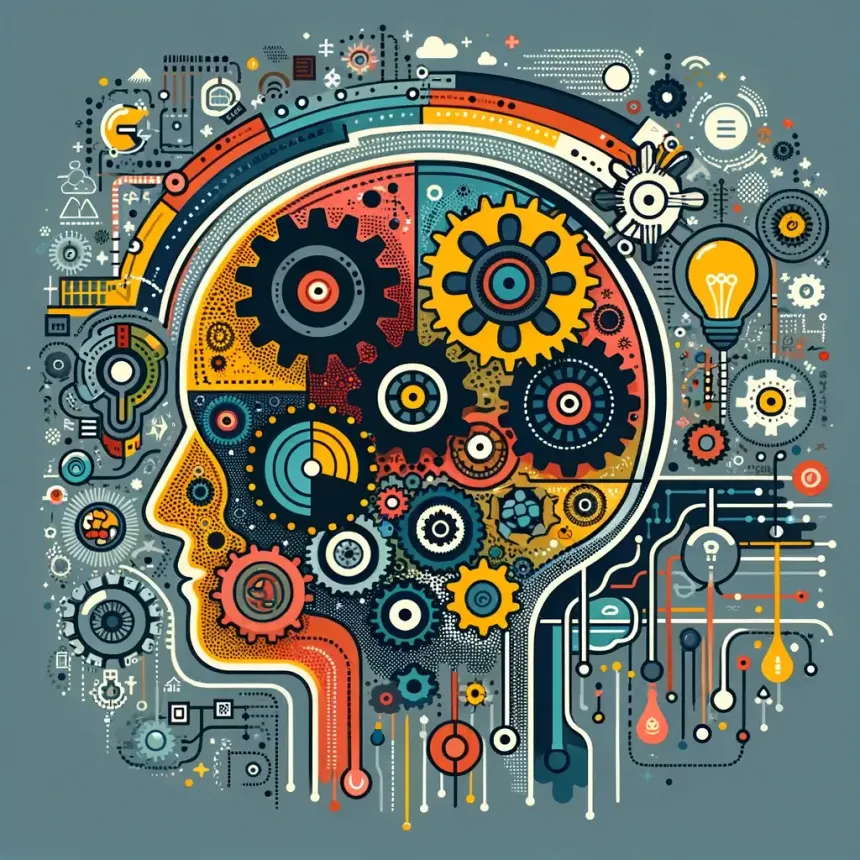
Describe and explain how sleep facilitates information processing.
The cognitive approach suggests that sleep plays a crucial role in processing, storing, and organizing information, much like a computer. Sleep helps consolidate memories, strengthen learning, and improve cognitive function.
1. Memory Consolidation & Learning
Different stages of sleep support different types of memory:
Sleep Stage | Memory Type Processed |
|---|---|
Stage 2 (light sleep) | Facts & events (declarative memory) |
Early Non-REM (Stages 1 & 2) | Motor memory (skills, movements) |
REM Sleep | Procedural memory (habits, skills) |
REM Sleep | Emotional memory, creativity, insight |
Memory moves from short-term to long-term storage.
Sleep strengthens neural connections, making recall more efficient.
2. Attention & Problem-Solving
Sleep enhances focus and attention, which is necessary for learning.
A well-rested brain can process and analyze new information faster.
Lack of sleep reduces decision-making and problem-solving abilities.
3. Supporting Evidence
Mednick et al. (2003) → Sleep (even a short nap) improves perception tasks.
Seehagen (2015) → Babies who napped after learning an action had better recall.
Zammit (2009) → Insomnia sufferers perform worse on concentration, memory, and problem-solving tasks.
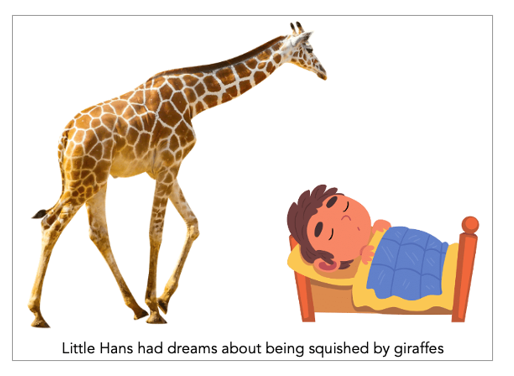
Describe and explain manifest and latent content of dreams.
Manifest Content:
The surface story of the dream.
Example: Dreaming about being in a school.
Latent Content:
The hidden meaning behind the dream.
Example: The school dream may reflect feelings of being judged or needing personal growth.
Dreamwork:
The process of interpreting the manifest content to reveal the latent content.
Freud believed dreams are messages from the unconscious.

Describe and explain the impact of drugs on sleep.
Stimulants (e.g., caffeine): Can make it hard to sleep, keeping you awake.
Prescription Meds: Some help you fall asleep, while others make you feel sleepy.
Amphetamines: Keep you awake but disrupt sleep later.
Effect of Drugs: Some drugs affect the quality of sleep, making it harder to fall asleep or stay asleep.

Describe and explain the impact of light on sleep.
Artificial Light: Disrupts our natural sleep cycle, especially blue light from screens.
Melatonin: Light affects melatonin release, making it harder to sleep.
Screens: Using phones or tablets before bed can delay sleep and reduce REM sleep, leading to tiredness.
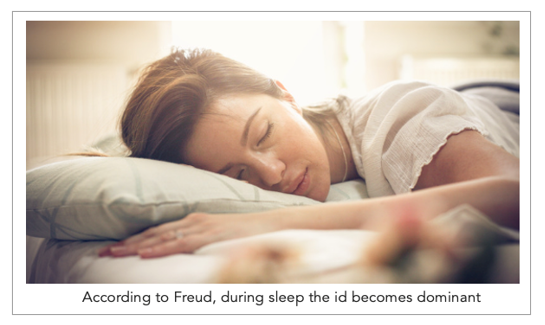
Describe conscious, unconscious psychodamic processes
sigmund freud said Imagine your mind is like a big iceberg. The part you can see above the water is the conscious mind, and the huge part underneath the water is the unconscious mind.
The psychodynamic approach says that the unconscious mind affects behavior. It was created by Freud, who believed that childhood and parent interactions shape personality.
Three Parts of the Mind:
Id (Unconscious): Wants pleasure and does not care about rules.
Ego (Conscious): Thinks logically and makes decisions.
Superego (Partly Conscious & Unconscious): Knows right from wrong and makes us feel guilty.
Supression:
When awake, the ego stops the id from acting on hidden desires.
In sleep, the id is in control, and dreams reveal hidden wishes.
The superego makes us forget dreams if they are disturbing.
Freud called dreams the "royal road to the unconscious."

What is suppression? (conscious)
Suppression: a conscious effort (choosing) to stop yourself from thinking or feeling something, like anger or sadness.
It’s like trying to push something into a box, hoping it stays hidden.
But the feelings don’t disappear and can come back later, especially in dreams.
Freud's View: Dreams help fulfill repressed wishes or desires.
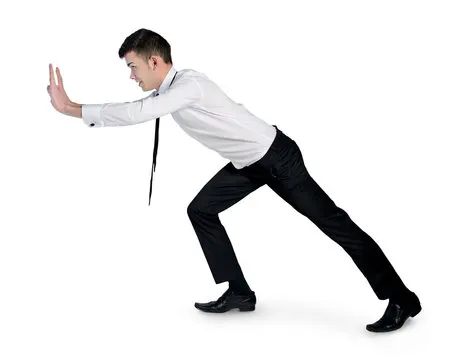
What is repression? (unconscious)
Repression: an unconscious process, automatically Pushing away painful or disturbing thoughts, memories, or feelings to avoid worrying about them.
These thoughts don’t disappear—they stay hidden in the unconscious mind.
Can lead to psychological problems over time.
Can show up in dreams or Freudian slips (saying something by accident that you didn’t mean).

What is displacement?
Displacement: When you redirect your feelings (like anger) to someone or something else that’s less threatening.
Example: Yelling at a friend when you’re really angry at your teacher.
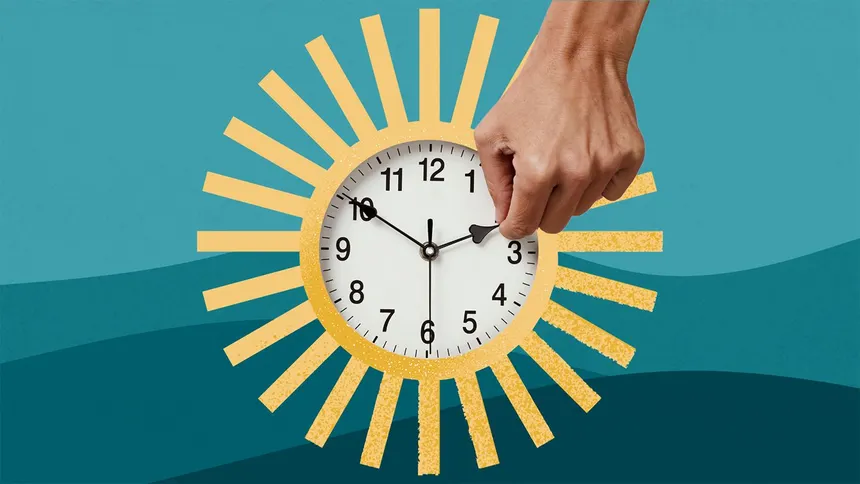
Evidence for an endogenous pacemaker (body clock) (circadian ryhyms)
The endogenous pacemaker is the body's internal clock that controls biological rhythms, like the sleep-wake cycle. It works without external cues (like light or time).
Main Example: The Suprachiasmatic Nucleus (SCN)
Found in the brain (hypothalamus).
Controls the circadian rhythm (about 24 hours).
Sends signals to the pineal gland to release melatonin, making us sleepy.
Even without light, the SCN keeps running, but it can adjust if light cues (exogenous zeitgebers) are present.
Siffre’s Experiment (1962): Lived underground for 2 months without clocks or sunlight, and his body kept a 24.5-hour sleep-wake cycle.
Shows our internal body clock runs naturally, even without outside cues.
Morgan’s Study (1955): Hamsters with altered brain cells had their sleep-wake cycle changed to 20 hours, showing the SCN controls biological rhythms.
Dement and Kleitman's (1957) study of REM sleep and dreaming
Aim:
To find out if dreaming happens during REM sleep and if the length of dreams matches the length of REM sleep.Method:
9 adults (7 men, 2 women) slept in a lab with an EEG to monitor brain activity.also attached to a polysomnography (PSG) to measure sleep and an EOG to measure eye movement
They were woken during REM or non-REM sleep and asked if they were dreaming and how long they thought the dream lasted.Results:
People dreamed more during REM sleep. (80%)
The longer REM sleep lasted, the longer the dreams. 5 minutes = short dream, 15 minutes = long dream
EEG scans showed different brain activity during REM sleep.
people are able to recall their dreams length accurately
Eye movement did match the content of the dreams. eg someone dreamed about tomatoes being thrown (horizontal movements) and climbing up a ladder (vertical movements)
Evaluation:
Strengths: Strong link between REM sleep and dreaming; high control in the lab.
Weaknesses: Small sample size (9 people); waking people up could affect dreams.
Big Idea:
Dreams mostly happen during REM sleep, not randomly.
Crick and Mitchison's Reorganisational theory of dreaming
Idea:
"We dream in order to forget."
Dreams happen because the brain is removing useless memories during REM sleep.
This process is called reverse learning (the brain unlearns things it doesn't need).
Why does this happen?
The brain gets too full of information during the day.
During sleep, the brain cleans out memories that are useless or harmful (parasitic memories).
This makes space for important memories (adaptive memories), so they are stronger and easier to remember.
Dreams are just a side effect of this cleaning process.
Evidence:
Some animals do not have REM sleep (echidnas and some dolphins).
These animals have bigger brains than normal for their body size.
This suggests that REM sleep helps other animals organise memories so their brains can be smaller and more efficient.
Evaluation (Strengths & Weaknesses)
✅ Strengths:
Explains why REM sleep is important for memory.
Suggests the brain makes better use of space by keeping only important memories.
❌ Weaknesses:
Not tested on humans – only evidence comes from dolphins and echidnas.
Other research shows sleep helps memory rather than deleting memories.
Humans have unlimited memory storage, so deleting memories might not be necessary.
If dreams are just random thoughts, why do they often tell a story?
If sleep deletes bad memories, people with PTSD wouldn’t have nightmares.
Czeisler's (1990) study of night shift workers
Background:
Night shift workers often struggle with sleep and have worse focus and thinking skills.
Major disasters (like Chernobyl) happened in the early hours, showing how dangerous night shifts can be.
Czeisler wanted to see if bright light could help night workers sleep better and be more alert.
Aim:
To see if bright light during work and total darkness when sleeping could help fix the sleep-wake cycle for night shift workers.
Method (What they did):
Type of Study: Lab experiment.
Participants: 8 healthy men (aged 22–29).
Rules:
No medical or sleep problems.
No drugs, alcohol, or caffeine (tested to make sure).
Procedure:
Each person worked in a lab night shift from 11:45 PM for 6 days.
They did thinking tests and reported on mood and alertness.
Two groups:
Bright light group (12,000 lumens): Worked under very bright light and slept in total darkness at home.
Normal light group (150 lumens): Worked under normal room light and slept in normal conditions.
Results (What they found):
✅ Bright light group:
Slept 7.7 hours (longer sleep).
Felt more alert and did better in tests.
Their body temperature shifted forward by 9 hours, meaning their biological clock adjusted.
❌ Normal light group:
Slept only 5.7 hours.
No improvement in alertness.
Their biological clock stayed the same.
Conclusion (What it means):
Bright light during work + total darkness at home helps night shift workers adjust and feel more awake.
The body’s internal clock can be changed with controlled light exposure.
Evaluation (Strengths & Weaknesses):
✅ Strengths:
Good control: No caffeine, alcohol, or drugs meant the results were truly from light exposure.
Strong results: The big change in body temperature between groups was unlikely to be random.
More realistic than other sleep studies – participants went home after work, making it closer to real life.
❌ Weaknesses:
Only 8 young men – results might not apply to women, older people, or larger groups.
Lack of control at home – they could have eaten different breakfasts or slept at different times.
Not real shift work – they only did tests, so real jobs might have different effects.
Oswald's restoration theory of sleep
Key Idea:
biological theory suggests All animals (including humans) sleep so the body and brain can repair themselves.
Sleep must be important for survival because it hasn’t changed through evolution.
What Happens During Sleep?
Non-REM sleep: Repairs the body (cells, muscles, energy).
REM sleep: Repairs the brain (removes waste, restores function).
Evidence Supporting the Theory
🧪 Rechstaffen et al. (1989) – Sleep Deprivation in Rats
Rats forced to stay awake lost weight, had unstable body temperature, and died after a few weeks.
Shows sleep is essential for physical restoration.
🧪 Savard et al. (2003) – Sleep & Immune System
People with insomnia had fewer immune cells than normal sleepers.
Suggests sleep is needed to help fight illness and repair the body.
🧪 Shapiro et al. (1981) – Ultramarathon Runners
After extreme exercise, runners slept 90 minutes longer for two nights.
Non-REM sleep increased, suggesting sleep helps repair the body after physical strain.
Evaluation (Strengths & Weaknesses)
✅ Strengths:
Sleep is when muscles grow, tissues repair, and growth hormones are released → supports the idea that sleep restores the body.
Explains why all mammals need sleep despite evolution – it must serve a crucial purpose.
❌ Weaknesses:
Too simple – it assumes sleep is only for repair, but sleep has many functions (e.g., memory processing).
Doesn’t explain sleep differences – some animals sleep more/less but still survive.